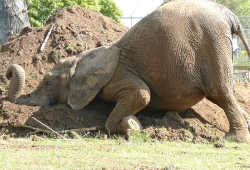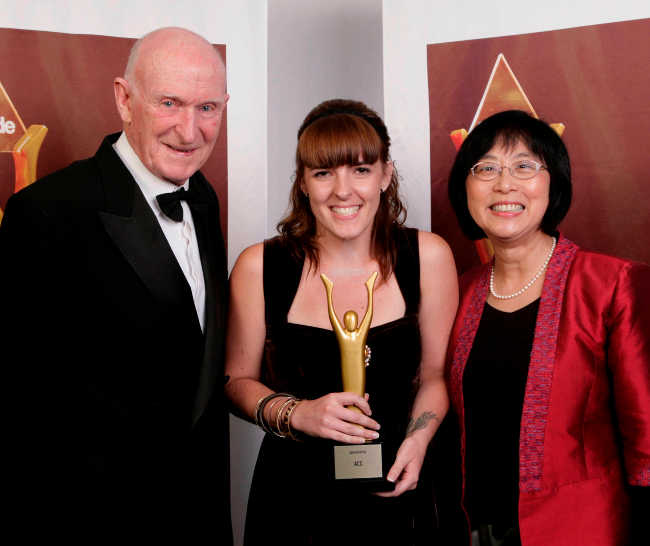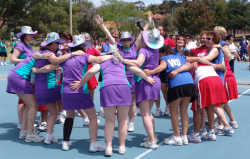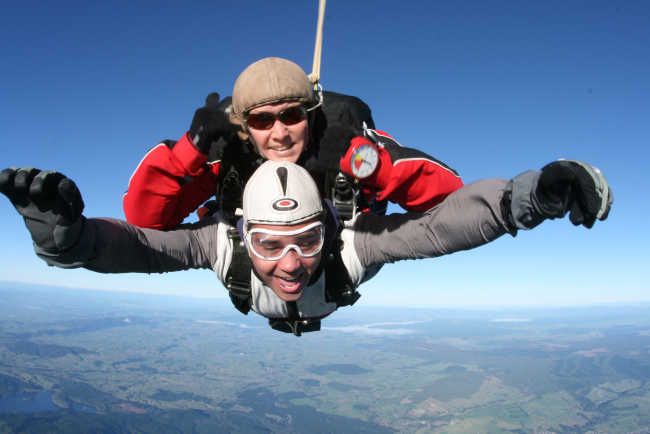Reprinted from the University of Canterbury’s “Chronicle”
– 19/11/04
Sports scientists at the University of Canterbury can take a bow for the part they played in the New Zealand Paralympic team’s impressive medal haul in Athens last month.
In all, University staff helped 12 of this year’s 36 New Zealand paralympians in their preparation for the Paralympics in the Greek capital.
Of the 10 medals New Zealand picked up – six gold, one silver and three bronze – many went the way of athletes from the Canterbury region who gained their winning edge with the help of time spent at the University’s Sport Science Centre.
Lending their expertise to athletes across many sporting disciplines were Jane Simpson and Matt Ingram (biomechanics), Richard Clarkson, Malcolm Humm (physical conditioning), Steve Rickerby (conditioning and exercise physiology) and Paul Carpinter (sport psychology).
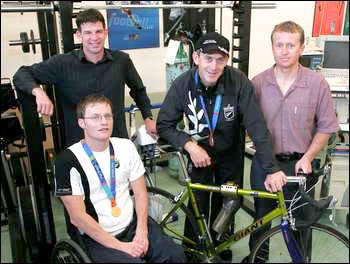 |
|
Sports Science Centre staff Malcolm Humm (back left) and Steve Rickerby (back right) with Wheelblack gold medallist Tim Johnson and Paul Jesson who won bronze in the cycling time trial road race.
|
The UC Sport Science Centre has had a long working relationship with paralympians such as track athlete Matt Slade, shooter Colin Willis and marathon wheelchair athlete Ben Lucas, centre director Paul Carpinter said.
However, the University’s role as a sport science service provider for paralympians expanded this campaign when Paralympics NZ and the national co-ordinator for Sport Science Services asked Mr Humm to co-ordinate the delivery of the total programme to athletes within the greater Christchurch area.
The University took on the role of testing and training athletes competing in wheelchair tennis, wheelchair rugby, athletics, cycling, shooting, boccia and swimming.
One of the crucial sessions on the athletes’ testing and training programmes was heat acclimatisation.
“We would heat the lab to in excess of 32degC and change the humidity to get the athletes used to the conditions they would face in Athens,” Mr Carpinter said.
Those sessions were crucial as many of the paralympians’ bodies have damaged thermal control mechanisms, and it was important to know each athlete’s stress responses.
The staff involved were delighted to hear through constant email contact from the Kiwi HQ at the Olympic village about the successful performances of athletes they had worked with.
One such success was Christchurch cyclist Paul Jesson’s bronze-medal performance in the individual time trial.
“It was a fairly outstanding performance for a man just about to turn 50 competing against athletes in their early 20s,” Mr Carpinter said.
A golden performance that UC could bask in the glow of was Matt Slade’s gold-medal sprint in the 200m. Slade, who won New Zealand’s first gold medal at the Paralympic Games, had “prepared well”, Mr Carpinter said.
Other athletes whose elite training at Canterbury paid big dividends were Rangiora’s Jeremy Morriss whose team clinched a silver in boccia, and the Wheelblacks (wheelchair rugby team) who beat reigning world champions Canada in the final to take the gold medal.
Mr Humm, who worked closely with the physical conditioning of five of the Wheelblacks both at the Sports Science Centre and at Parafed at Burwood Hospital, said it was great to see four Cantabrian players in the starting line-up for the final.
Mr Carpinter said it was a privilege to work with all the paralympians in their build-up to Athens. “Compared to many other carded athletes, by-and-large they were more willing to go the extra mile … and they are aware of their limitations in a positive way which maximises their conditioning potential.”

